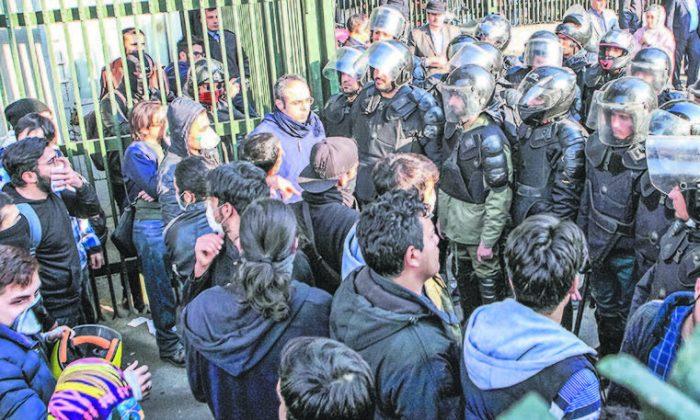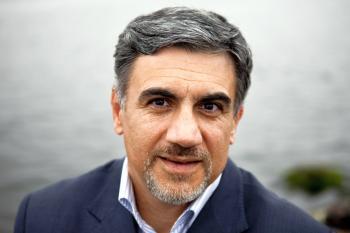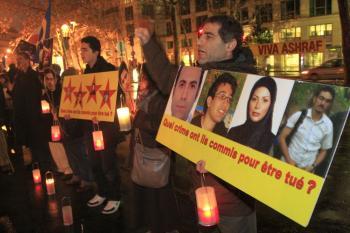There’s a sense of cynicism that has grown among much of the Iranian diaspora about the likelihood of regime change in Iran.
It’s not new, nor did it come about in a simple fashion. It’s been carefully baked year after year for just under the last 40 years of the Islamic regime’s rule.
Iranians around the world welcome the prospect of change, but have developed a keen sense of its extremely unlikely probability.
News sources provide updated reports and data points. They bring on think-tank talking heads to provide the historical context, yet their arguments are, overwhelmingly, hedged against significant change.
On watching and listening to these reports, some Iranians give a mild mental nod of affirmation. Some Iranians vehemently disagree. Some point to the television as they look left and right to friends and family, asking, “Who is this?”, and challenging the magnanimously presented theory that goes against their own lifelong experiences.
Yet the cynicism still clouds their framework of thought, and most of the dialogues on the topic, whether heated or not, end with the cordiality of a mild smile or smirk and the thought that nothing will change.
And who can blame them?
Our minds are trained to be restricted to binary possibilities.
Malcolm Gladwell’s book “David and Goliath: Underdogs, Misfits, and the Art of Battling Giants” helps to convey the mistakes of assumptions built upon size, legacy, and past history, or the perceptions of it.
We have been taught that bigger and better wins, smaller and weaker loses. And if you have seen the regime win, again and again, there’s little reason to believe that anything to the contrary could ever happen. Not only have we been taught this repeatedly, but we have experienced it repeatedly.
Gladwell and others have helped to present the flaws in these assumptions.
Unfortunately, some of these flawed assumptions appear to be ongoing about the recent protests in Iran.
We hear about the power of the theocratic leader Ali Khamenei and his stranglehold on the Iranian people through the Revolutionary Guard. We hear about the long rule of the Islamic regime since 1979. We hear about the rising death toll and the more than 1,000 arrests to date. We hear about the blocking of social media platforms, including Twitter, Telegram, and others.
All of these elements have been a part of prior protests, including the largest to date, the post-election riots of 2009.
And all of them have been dealt with successfully by the regime, resulting in its continued tyrannical power.
However, other factors are also highlighted about the unrest and protests that began in Mashhad on Dec. 28 and spread to more than 80 cities in Iran.
They began organically without any centralized leader.
Smartphones with social media platforms are in the hands of almost all Iranians today, something that wasn’t the case in 2009.
VPN technology to break through the regime’s firewall, which blocks Iranians’ access to share and distribute information, is known and avidly used by the citizenry.
The “elected leader,” President Hassan Rouhani, is overwhelmingly believed by the Iranian people to be seamlessly joined with and symbiotic to Khamenei and the regime itself.
Let’s set all of this aside, though.
When we look at the historical context of regime changes, or the big changes that lead to them, we see that they do not always unfold as a result of a logical, choreographed series of events driven by internal or external forces. Sometimes they just happen, because time deems it necessary.
Let’s take the fall of the Berlin Wall.
A fumbled press conference by Politburo member Günter Schabowski, where information about minor changes to border wall policy were misdelivered and also misinterpreted, led to a mass of East Germans storming the Berlin Wall.
A senior Stasi official on duty, seeking instructions, made phone calls seeking out approval from higher-level officials, as the pressure mounted.
And he made a snap decision to allow a few people through. This “crack” in the wall essentially led to an open wall, and everyone was soon thereafter allowed through to West Berlin.
Of course, these details are heavily summarized, but we see that a wall can collapse as a result of miscommunication when pressure mounts.
Maybe a tyrannical regime, led by its extreme paranoia, can cause its own collapse as well.
Multiple sources have now reported that former President Mahmoud Ahmadinejad, the hardliner whose “sweeping” election win in 2009 led to the post-presidential election protests, has been arrested for “inciting violence.”
Are these the unchoreographed or unintended closing credits for the regime and its leaders?
It certainly seems so.
Given the potential threats against the author by the Islamic regime, a pseudonym has been used.
Views expressed in this article are opinions of the author and do not necessarily reflect the views of The Epoch Times.



